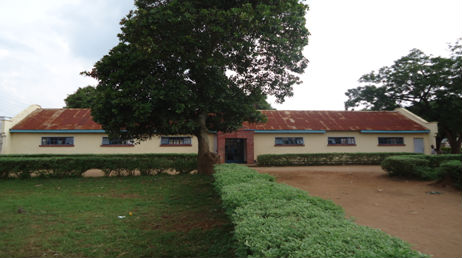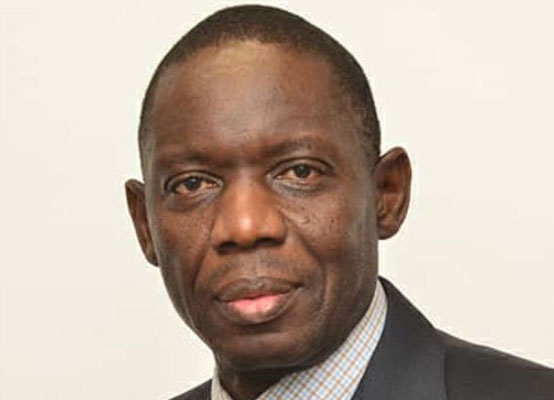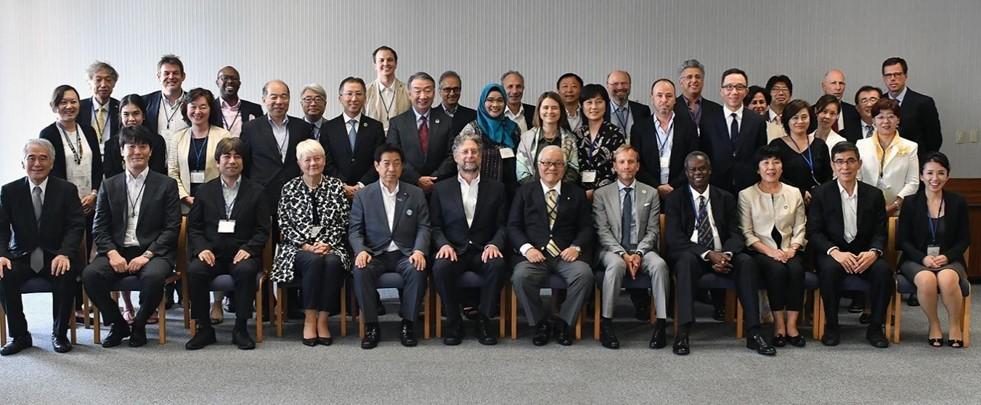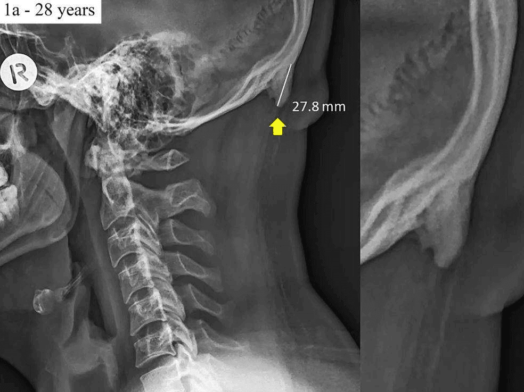Teso College is composed of two wings, the east wing and the west wing. Each wing contains classrooms, dormitories, and other necessary infrastructure.
The main administrative offices, shown in the photo, are located in the east wing. This building houses offices for the Head Teacher, the Head Teacher’s secretary, the deputy head teachers, and the school bursar. It also includes a small chapel and the staff room.

The TCA Assembly Hall is adjacent to the administrative building. It serves multiple purposes, which include Saturday morning assemblies, special conferences, meetings and debates. It is also used for entertainment purposes, such as film screenings. Teso College Saturday Assemblies are a weekly tradition. It is a time in which the whole school is brought together after the week’s activities to refocus and prepare for the week ahead.
The number of students attending Teso College has grown so much that the Assembly Hall is also used for the purposes of holding National Exams at the end of the year.

Mr. Jones addressing students and staff
TCA has eight dormitories for ‘O’ (Ordinary) Level students (five in the east wing and three in the west wing); and one dormitory and two halls of residence for ‘A’ (Advanced) Level students. Each dormitory in the east wing has a sister dormitory with the same name in the west wing. In the previous years, ‘A’ Level students were only housed in two halls, but due to increased enrolment, this was no longer possible. The dormitories were named after influential personalities in the administration of Teso at the time, and other key African figures. They include the following:
- Kenyatta House was named in honour of Jomo Kenyatta, originally born Kamau Wa Ngengi, the first President of the Republic of Kenya.
- Lumumba House was named after Patrice Émery Lumumba was a Congolese independence leader and the first legally elected Prime Minister of the Republic of Congo (now Democratic Republic of Congo) after he helped win its independence from Belgium in June, 1960.
- Obwangor House was named in honour of the political boss of First Teso District at the time, Cuthbert Joseph Obwangor, for his immense contribution to the development of Teso. Obwangor was the first Etesot to represent Teso district in Uganda’s parliament. Obwangor House has a capacity of 128 students, and is closest to the dining hall. It has generally performed the best in sports and during inspections.
- Akabway House got its name from Akabway Stephen, who started out a Sub-County Chief and retired as County Chief of Katakwi County (present-day Katakwi district).
- Engulu House was named after Engulu Eria Paulo, the first Principal Judge of Teso District, who also officiated in the first Assembly of Teso College Aloet.
- Engwau House was named after Justice Engwau, who studied in Teso College between 1957 and 1960. Engwau had a First Class Law diploma from Nsamizi Law School. Upon completing his studies, he first worked as a teacher in Iganga C.O.U, then worked in Lira district. He joined the Judiciary as a Grade III Magistrate in 1964.
- Epaku House got its name from Epaku, who donated the land upon which the school is constructed.
- Esabu Housewas named in memory of a County Chief in Teso district, Esabu Patrick, who was later elevated to the position of District Commissioner, Mubende district.
There is one dormitory and two halls of residence for ‘A’ Level students. These include Akabway House, Jones Hall and Inyoin Hall. The two adjoining halls are separated by a common area.
- Jones Hall is named after the pioneer Headmaster of the school.
- Inyoin Hall was named after Inyoin J. Onaba Kamodan, popularly known as J.O.K. He rose from the position of classroom teacher at Ngora High School to become the first Treasurer of the Teso District Council. J.O.K was a man of transparent honesty, who advocated a corruption-free Teso district. This hall accommodates 120 ‘A’ Level students.
- Akabway House got its name from Akabway Stephen, who began his career as a Sub-county Chief and retired as County Chief of Katakwi County (present-day Katakwi district).
Teso College Aloet allows freedom of worship. The school has two churches – the Church of Uganda, located in the west wing, and the Catholic Church, located in the east wing. The Scripture Union and most of the born again students worship and operate from the Church of Uganda.
Jesus Christ left heaven’s glory and lived on earth in meekness and poverty so that He could serve, heal and teach whoever would come to Him. Jesus’ life was a perfect example of the ideal of Service that our school motto, “Aijaanakin ka Arimarit”, reminds us to practice. He came as the Light of the World to forgive all who were repentant, and to give hope and comfort to the poor, the sick and the oppressed. He, the Lord of Glory, came to humanity as a Servant, and even suffered death in order to save mankind from sin. As believers, we are expected to emulate His example.







